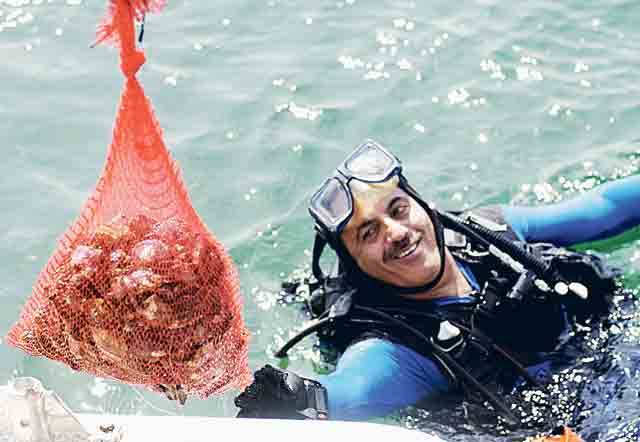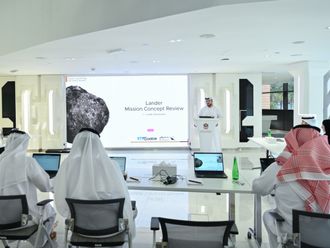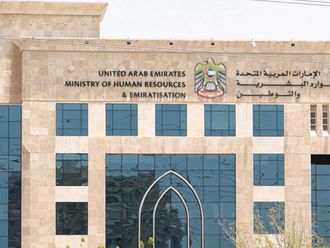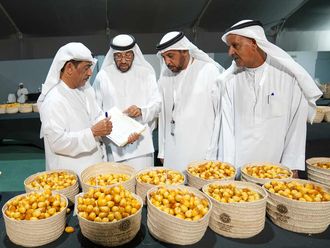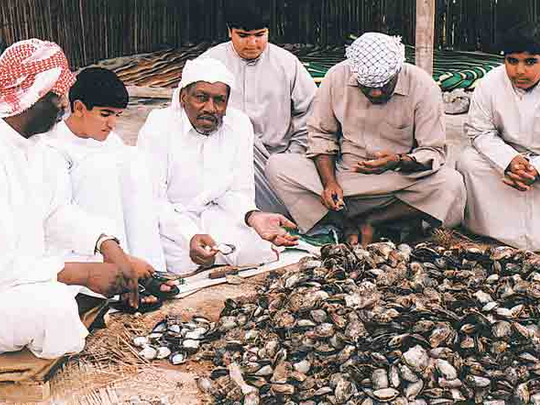
Questioning how the pearling industry declined in the UAE and in the Arabian Gulf since oil trade began about 60 years ago may not help revive what had once been the most rewarding business activity in the region. But for Victoria Penziner, a social history researcher from the United States, it was the question that led her to find the reasons behind the rise and fall of pearling.
She believes the Gulf pearl, which earned international recognition for its fine quality, can regain its significance in the region if a new business model for pearling is created in the 21st century. "All that we need at this stage is to look at pearling as a profession worth taking up in the modern era and not as a hectic job that we can ignore because we now enjoy the prosperity of the oil era," Penziner told Weekend Review.
Penziner is on a research mission to the UAE, sponsored by the US government's Fulbright Programme in cooperation with UAE University and Florida State University. She is a doctoral candidate at the Florida university and holds a bachelor's degree in history and two masters degrees in Middle East history and Near Eastern studies.
Celebrating the release of her 31-page research on pearling in the Gulf, Penziner is certain that pearling can become a sustainable business activity if leaders and people are convinced to take a fresh look at this traditional trade and remove the hurdles that led people to shun it.
She said it was shocking how Emiratis had given up an important part of their heritage for the sake of modernity. "Pearling has almost been forgotten at the government level and by the public."
"Whenever I ask colleagues at UAE University about the elements that form Emirati heritage, pearling never comes up although it once employed 80,000 people in the northern emirates and contributed to about 95 per cent of the trade with the rest of the world just 70 years ago. If this is not part of UAE heritage then what is?" she asks. "The national dress, the connection with the desert, poetry, traditional dances, Islam and the Arabic language form the national identity of the people of the UAE. But the sea, an important aspect of its heritage, is becoming more difficult to understand in the context of the country's past."
However, she added, pearls and seashells are used as symbols in monuments, heritage villages and museums across the UAE.
According to Penziner, pearling is often portrayed only with regard to its material culture, the tools and grades of pearls. When it comes to people, the discussion revolves around their position aboard the pearling ship or the difficulties they encountered in the profession.
Penziner said pearling was a difficult profession but once formed the backbone of the Gulf's economy. For at least 6,000 years, people in the region lived on their income from pearling, with business booming in the 15th, 17th and the late 19th centuries. It provided them with increased financial security.
In spite of its prominence in the history of the UAE, the researcher said, pearling had been marginalised in the country's heritage narrative mainly because it involved leading a tough life.
"Pearling involves an aesthetic commodity whose value fluctuates dramatically because of fashion and geographical trends. But the trend among people who were once involved in pearling is to forget those days and relegate pearling to the realm of past economic activity — it is not something to be carried forward as a heritage or as an economic activity. Once oil came, pearling dwindled and was unable to provide an income for the people," she said.
At the turn of the 20th century, the pearl trade entered a boom period. "The economy of the region was based on the export of pearls. According to the records of the British customs authority in the Gulf, in 1886-1887 pearls accounted for Rs1.8 million of the Rs2.03 million worth of exports. It was one of the years when pearl prices were comparatively low and smuggling was high," Penziner said. "Trade in pearls in the 19th century formed more than 90 per cent of total business activities in the Gulf."
The decline in the economic importance of pearling and the long hours of hard work in harsh conditions it involved made it an unattractive profession compared with working in the oil industry or as a government clerk.
In 1949, with traditional pomp, Dubai sent a fleet to the pearl beds for the last time. However, individual divers continued to go in search of pearls.
According to Penziner, economic instability, the promise of work outside the area and the condition of pearl workers contributed to the decline of pearling.
But accepting the decline and attributing it to the downturn of the pearl economy cannot be justified if compared with the case of the camel. "In spite of the decline of the camel as a transport utility, concerted efforts by individuals and the state have transformed the camel into a heritage symbol."
Penziner said there are a few groups who send out ships for individuals to experience pearl diving.
"The Emirates Marine Environmental Group organised a pearl diving event in 2009 while the Emirates Heritage Club did the same from time to time. In my opinion, more organised efforts are needed to revive the heritage of pearling in the region. The UAE needs to look into the economic dynamics of pearling and build on them so that the industry can be revived and linked to life in the region."
A hub of business and tourism
Pearls of Arabia is a programme launched by the Dubai Multi Commodities Centre (DMCC) to create a hub for retail and wholesale pearl traders. The project is expected to become a big tourist draw, attracting 15 million tourists by 2015. DMCC aims at re-establishing Dubai as a centre of global pearl trade as it used to be in the 1930s.
Pearls of Arabia will have a themed cultural and business centre and a 6,000-square-metre exhibition gallery that will host top pearl fashion houses from across the world. In its second stage of development, the centre will take visitors to more than 300 islands of what once was the world's best site for pearling.
The UAE produced some of the best pearls in the early 20th century. Dubai will use its strength in the gold and diamond trade to take pearls into the big league.
It will also introduce a set of standards to generate consumer confidence through uniform certification for pearls based on globally accepted quality parameters. The certification will be issued in conjunction with leading gem certification bodies.


